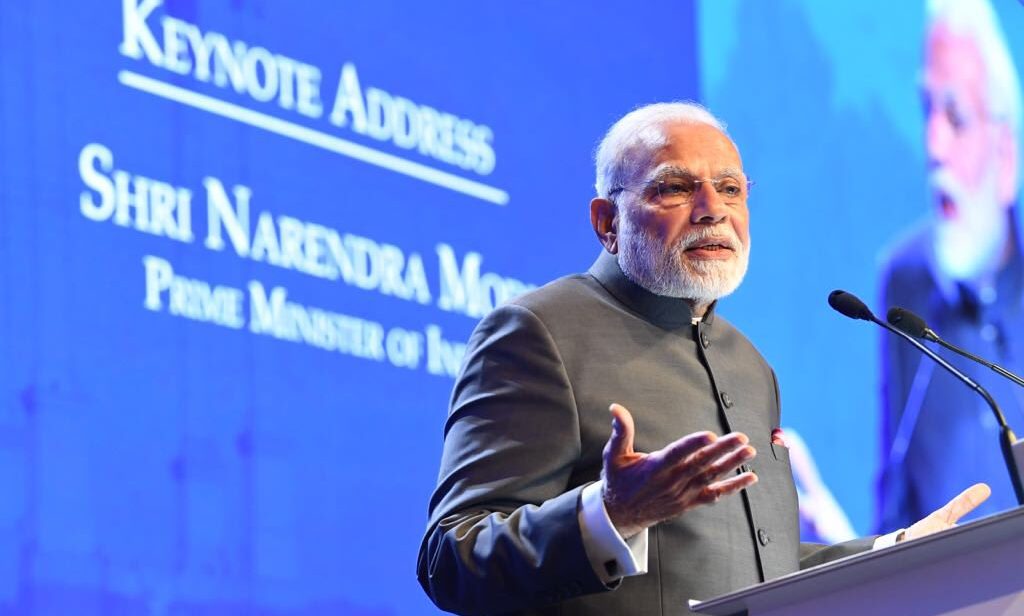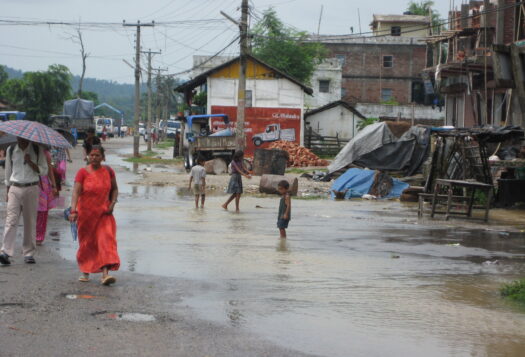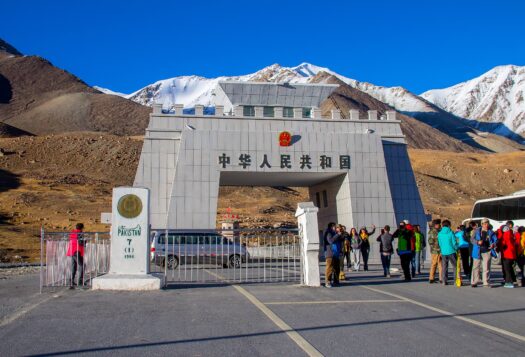
The Quadrilateral Security Dialogue (Quad) held its first ever (virtual) summit level meeting on March 12, 2021, between the heads of the four democratic partners—India, Japan, Australia and the United States. While the summit is historic for a number of strategic and geo-political reasons, the Quad Vaccine Partnership may emerge as a game changer and a precursor to a prospective resilient supply chain in a post COVID-19 world.
The vaccine partnership, a joint effort of the four partner states, pooling their respective capabilities in vaccine production (India), financial resources (Japan and United States), and logistics and the know-how of vaccine distribution (Australia), will strengthen efforts in ending the pandemic in the Indo-Pacific region. Additionally, the two working groups on climate change and critical and emerging technologies offer the quartet a chance to create supply chains in renewable technology, future telecommunications and other critical sectors, advancing a credible alternative to China driven supply chains under the Regional Comprehensive Economic Partnership (RCEP).
India can emerge as the biggest beneficiary by investing itself in the evolving Quad supply chains after backing out from the RCEP in 2020. As part of this, India should reject its self-imposed limitations, dualities, and reluctance and embrace the opportunities the Quad affords. The vaccine partnership and the two Quad working groups give ample advantages to India, to make the most of these opportunities in its quest to become a “five trillion economy,” boost its research and development (R&D) potential in the three sectors, and enhance its capacity as a credible power for regional development.
The vaccine partnership and the two Quad working groups give ample advantages to India, to make the most of these opportunities in its quest to become a “five trillion economy,” boost its R&D potential in the three sectors, and enhance its capacity as a credible power for regional development.
Supply Chains and COVID-19
One of the key disruptions caused by the COVID-19 pandemic was to global supply chains, forcing a reassessment of their stability, durability, and resilience in the post-pandemic world. The pre-pandemic global supply chains focused on cost optimization, commercial viability, and higher returns, leading to concentration of manufacturing in global consumer goods and technology, media and telecom sectors in a single producer, China, with share in global exports at 60 and 41 percent, respectively.
The pandemic showcased the fragility of this system, where a single disruption like a pandemic at the center of the global supply chain could not only lead to fast spreading of a disease but also global collapse of the production and distribution of essential commodities. The excessive dependence on a single lynchpin, China, also saw weaponization of trade policies to subvert calls for an independent inquiry into the origins of the pandemic, rise of immoderate nationalism and protectionist tendencies, and issues with regards to human rights violations, catalyzing calls for a recalibration of the global supply chains.
Quad vs. RCEP: Creating Resilient Supply Chains
Trading blocs help in creating supply chains and also areas of economic influence for the dominant economy of the region. The RCEP, a mega-trade deal encompassing the 15 Asia-Pacific countries, formally emerged in 2020, creating the largest free-trading zone in the world from Central Asia to the Pacific, thereby consolidating Chinese material and technological dominance in Asia Pacific. The RCEP envisioned the United States as a bystander with respect to forging economic alliances and building trade blocs in Asia.
It is difficult to gauge how successful the nascent Quad vaccine partnership will be in creating a prototype to rival the RCEP, as the two groupings differ vastly in purpose and context. The vaccine partnership is the first initiative in creating a supply chain, diversifying the Quad’s traditional security orientation, while the RCEP has a purely economic purpose. Nevertheless, the Quad shows promise in creating a credible alternative to Chinese driven supply chains with a few inherent strengths to the supply chain initiative that makes similar future initiatives worthwhile investments for participant states. First, it is the first tangible non-military initiative in the broader Indo-Pacific region that will be beneficial to a diverse mix of developed, developing and least developed countries in the region. This could also assuage doubts shared among Southeast Asian countries that the Quad is exclusively a politico-military alliance attempting to balance the economic umbrella (China) with the security umbrella (United States). Second, it gives the United States an opportunity to reaffirm its commitment to establishing and leading supply chains and trading regimes by building partnerships in Asia. It allows the new Biden administration to re-establish the United States as a stakeholder in Asia. Third, the emerging Quad supply chain provides a strategic option to companies looking at a “China plus one” alternative to their existing sources of manufacturing and market. Finally, the Quad partnership utilizes the capabilities of the four partners in their niche sectors to bring about multi-sectoral cooperation, allowing comparative advantage to all the four partners. This serves as a template for future supply chains evolving out of Asia, where monopolies give way to fair and balanced participation by all the members of the supply chain.

Advantage India?
The emerging Quad initiatives give India the chance to play a leading role in supporting a public-good supply chain. This comes especially after India refused to ratify the RCEP over apprehensions about its domestic manufacturing suffering at the hands of Chinese import influx and its stressed agriculture and dairy sectors facing competition from Australia and New Zealand. Proponents of free trade agreements criticized India’s decision to distance itself from the mega trading bloc as a continuation of the protectionist economic policies India practiced in the past.
The Quad vaccine partnership could provide India with an opportunity to exercise its comparative advantage in the domain of pharmaceuticals without concerns over market accessibility and intellectual property rights. Leveraging the respective expertise and capabilities of the other three partners, India stands to benefit in the domain of R&D, with access to cutting edge technology, logistics, and new markets, priming its pharmaceutical sector for the future.
The working group on climate change can help boost climate financing and investments, thereby assisting India in its quest to emerge as a “solar energy powerhouse.” A Quad-led solar tech supply chain can build on a similar U.S. initiative to create an alternate manufacturing base for cheap solar tech in India, reducing over dependence on China. This will help India achieve its solar energy targets and also strengthen India’s International Solar Alliance initiative by adding access to Quad-developed solar technology as a component. The Quad’s commitment to develop low emission technologies is also crucial for India’s Medium, Small and Micro enterprises (MSME) sector accounting for 48 percent of India’s total energy consumption. With the United States announcing a USD $41 million loan guarantee program for renewable energy solutions to the MSMEs, India could utilize the Quad working group to create a renewable energy fund on a similar template to boost renewable energy accessibility to the sector. The emerging and critical technology dimension of the Quad partnership is especially important for India’s development goals in the coming decades. India’s ambition to make the most of the Industrial Revolution 4.0, benefits from the support of the Quad, which can help it develop the required technology, create domestic standards at par with the world standards, and play a part in the developing supply chain in Robotics, 5G technology, and Artificial Intelligence.
If the vaccine partnership does ensure health security in the Indo-Pacific region and the working groups transform into alternative supply chains in renewable and critical and emerging technologies, the Quad may assert itself as a valuable future partnership.
Conclusion
Calling the Quad an “Asian-NATO” does great disservice to the immense potential the quartet holds beyond the security realm. Beginning as an effort towards reconstruction post-2004 Tsunami, the Quad has evolved in several significant respects. The Quad has the potential and flexibility to meet the needs of an interconnected world, where non-traditional security has enhanced traditional military definitions. If the vaccine partnership does ensure health security in the Indo-Pacific region and the working groups transform into alternative supply chains in renewable and critical and emerging technologies, the Quad may assert itself as a valuable future partnership.
***
Image 1: Ministry of External Affairs, India via Twitter
Image 2: Bloomberg via Getty Images


